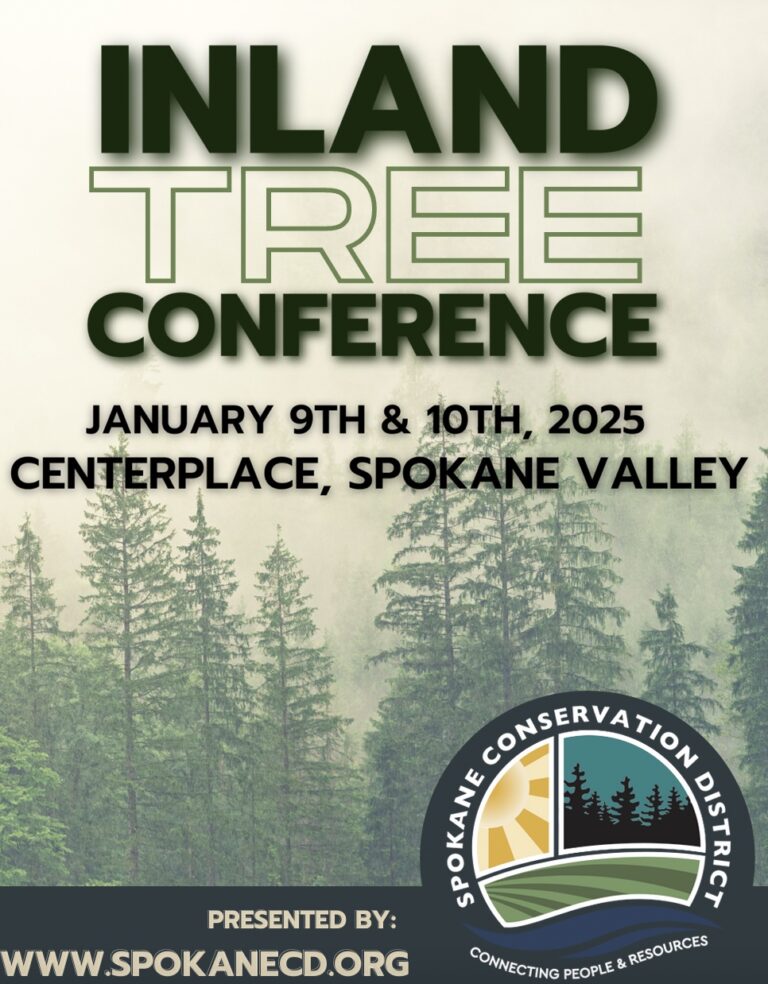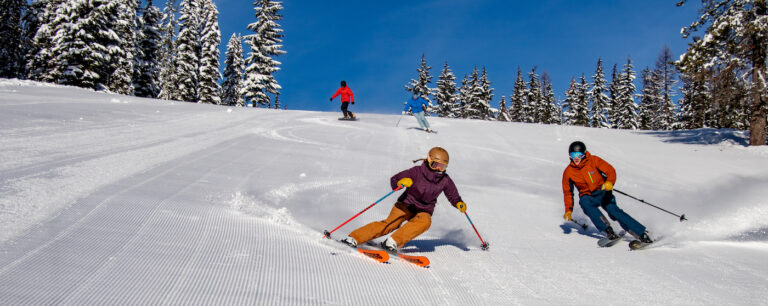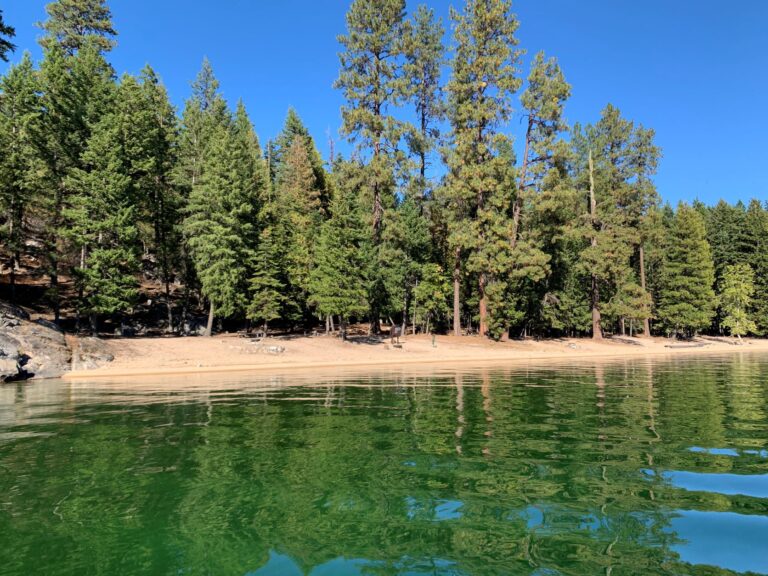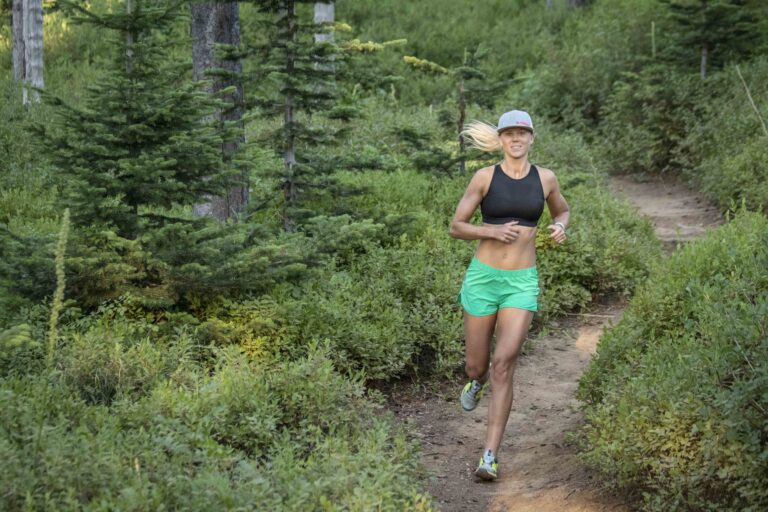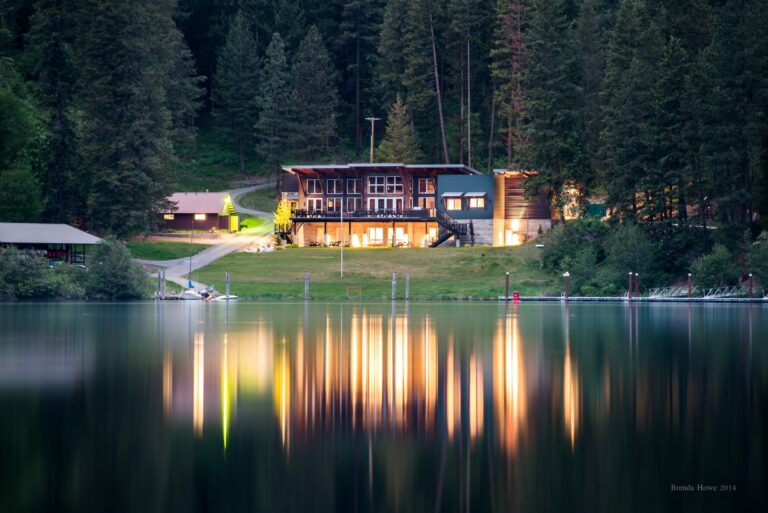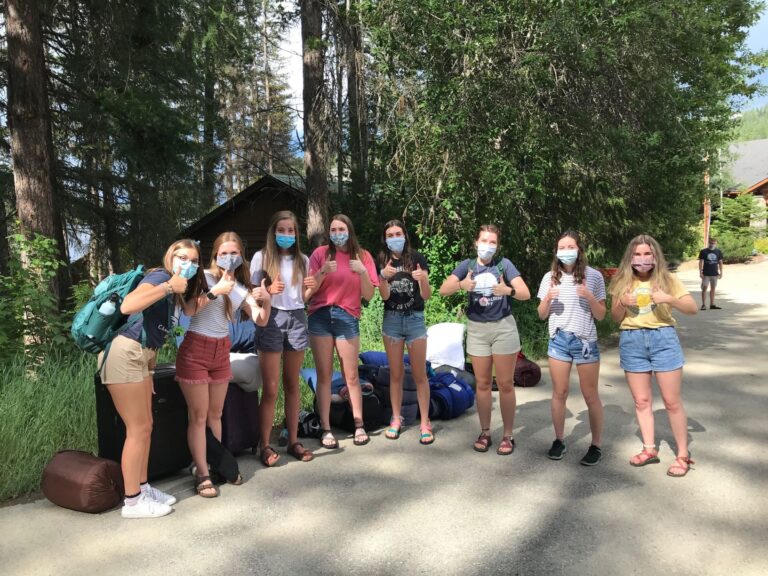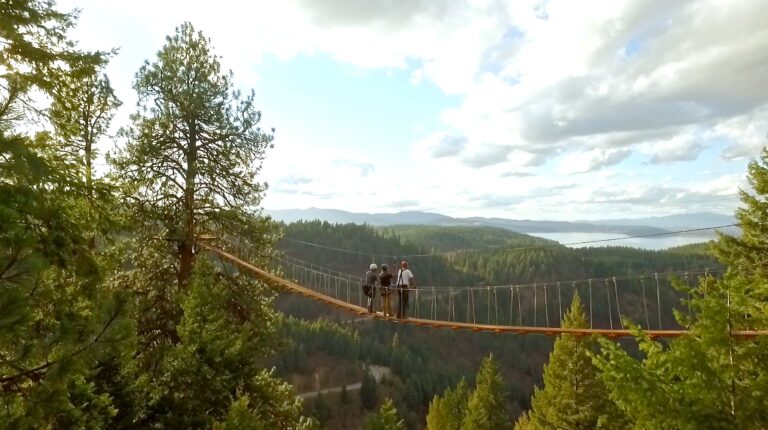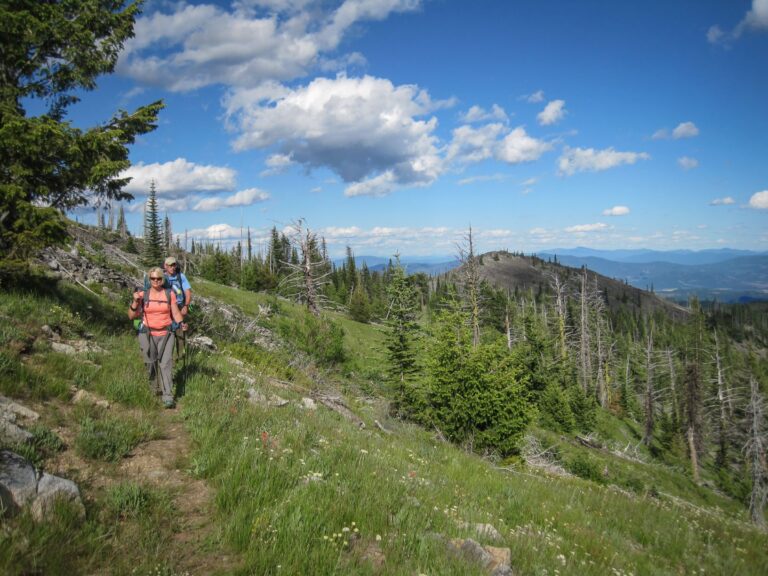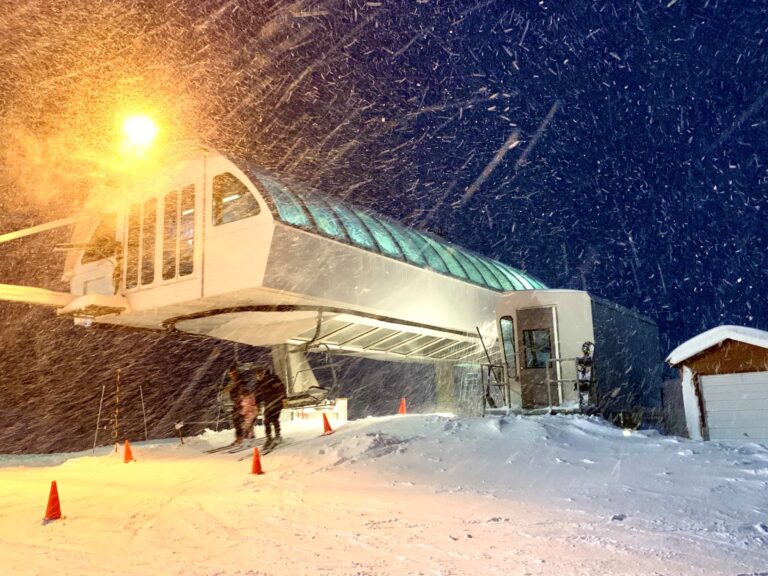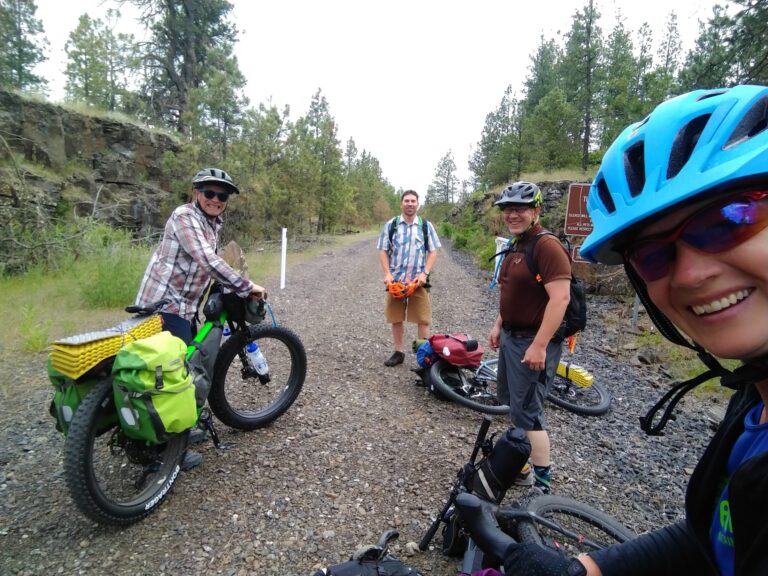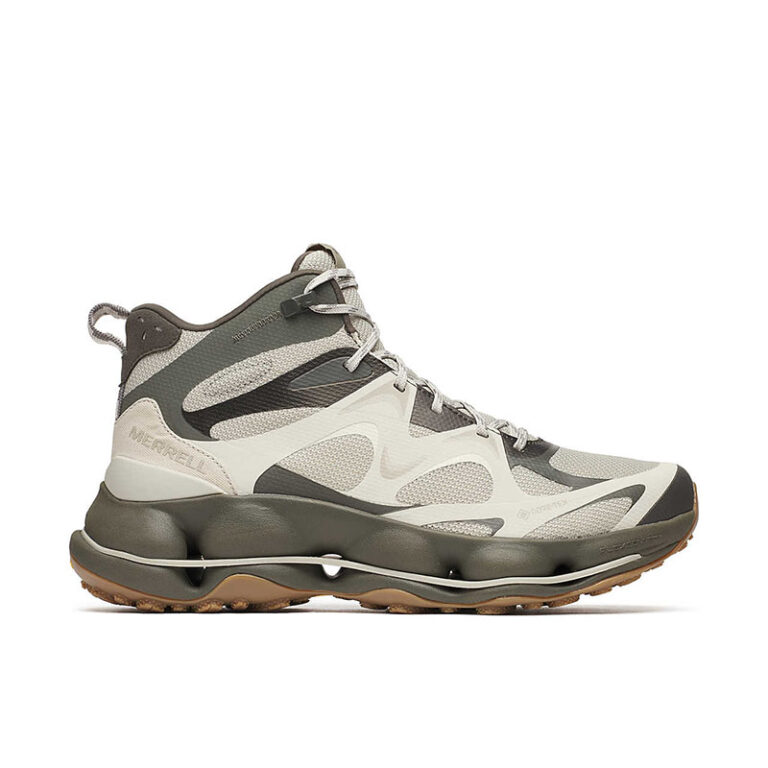By Adam Gebauer
Cover photo courtesy of Adam Gebauer
When I tell people I’m going shed hunting there is a pretty good chance I get a quizzical look. “Like a Home Depot run for a tool shed?” No, I am referring to a woodsy treasure hunt. When I say shed hunting, I mean looking for those boney bits that deer, elk, and moose grow each year and then discard, or shed: their antlers.
I was definitely one of those kids that came home with pockets full of nature’s treasures, but I started really shed hunting as a byproduct of my job and recreational pursuits. Wandering around the woods in early spring as the snow recedes from the landscape I would spy the white tine of an antler among the forest floor. After this happened a few times, my eyes started to cue in, paying more attention to the ground and taking note as to where I was actually finding these little (sometimes big) forest treasures.
Antlers are bone protrusions from the skulls in mostly male animals in the Cervidae family—deer, elk and moose in our region. They are the fastest-growing mammalian bone. They are technically different from horns (although many people use them interchangeably). Horns grow throughout the animal’s life and have only two parts: bone and a keratin cover (keratin is what makes up your fingernails). Antlers are grown seasonally to be fully mature for the fall breeding season. They consist of bone, cartilage, blood vessels, and are covered by a velvet skin that carries blood and oxygen to these fast-growing bones. As antlers mature, they lose their velvet cover, which cuts off the blood flow. This allows them to shed their antlers throughout the winter and early spring.
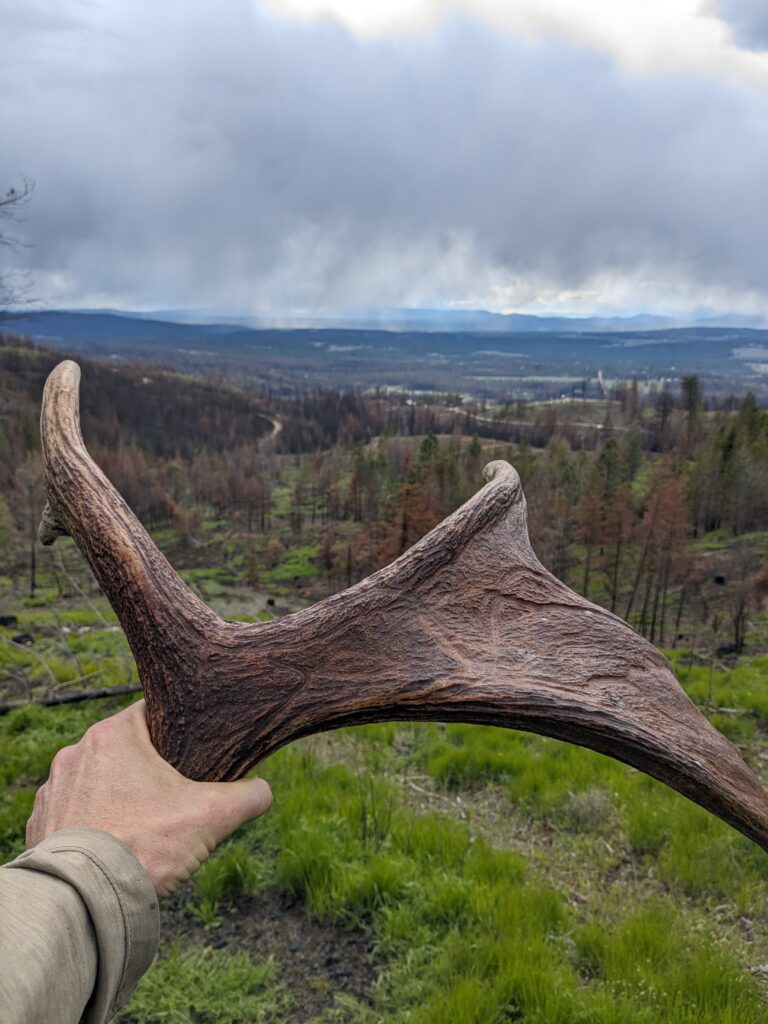
There is a tremendous amount of energy needed to grow these antlers every year. Their size can be a sign of a mature animal, metabolic fitness, and food gathering ability. They are used as visual sexual attractant, in combat with competing males, and defense from predators including off leash dogs.
Part of the appeal for many shed hunters is paying attention to where animals are moving and spending time—overgrown forest roads, fence lines, game trails, or dense stream-side habitat that would knock off an antler. There are many shed hunters who spend a lot of time planning and preparing for shed season. They train their dogs, glass areas with their binoculars, and track animal movements. It has gotten so popular that some states have instituted seasonal closures. These regulations are to protect wintering feeding habitat in times when food sources are scarce.
I am more of an incidental shed hunter, but over the seasons of slowly wandering off trail I have acquired a good collection of deer and elk antler, not to mention skulls, feathers and other forest booty. But finding a moose antler, known as a paddle because of its shape, had been a goal for a long time. I have walked miles and miles of timber harvests as part of my job, no moose paddle. I traipsed around wetlands and moosey habitat, swamping my boots, but didn’t find a moose paddle. Last year, however, my luck changed as I was out collecting morels after a burn. I was heading back to my truck along a grown over forest road along a creek that had escaped the burn. While climbing over and ducking under countless trees, there it was, the forest treasure that I had been seeking.
As with all my time out in the woods, I try to be aware that I am a visitor in someone else’s home. I don’t pick up every shed I find. They no doubt play a more important role on the forest floor (cycling nutrients for one) than on my mantle.
As the snow starts to melt, Adam Gebauer will be out looking for those shed antlers on the trail as he trains for a foolhardy half marathon. He is also looking forward to some equally foolhardy spring skiing.

